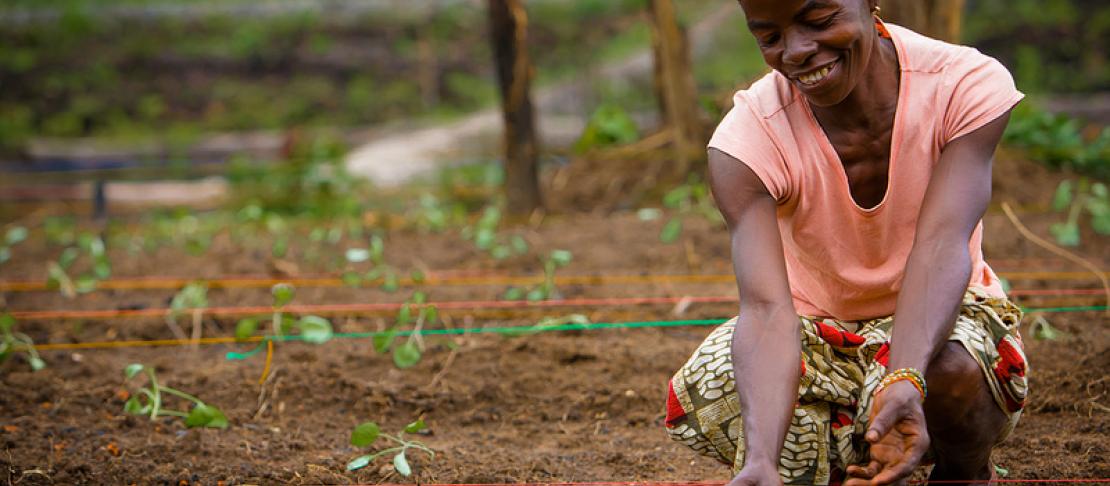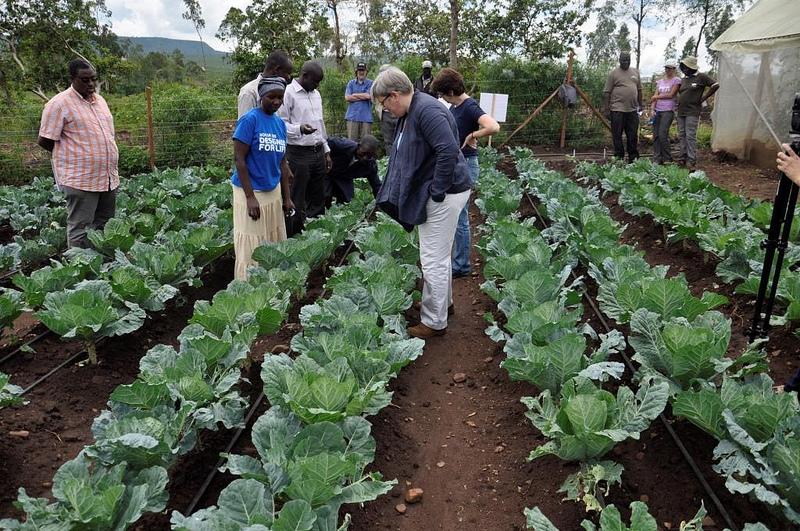Talking about agriculture and landscapes: report back from UN Climate Talks

Building on a rich legacy of five Agriculture Days and six Forest Days, this year’s first ever Global Landscapes Forum was able to pull together the agriculture and forestry communities under one roof, with one agenda and one joint hope to find the sustainable solutions needed to urgently feed 9 billion people under a warming climate.
Co-organised by the International Center for Forestry Research (CIFOR) and the CGIAR Research Program on Climate Change, Agriculture and Food Security (CCAFS), the main objective of the Forum was to spark discussions and create the framework for creating sustainable landscapes that simultaneously can provide livelihoods for billions of people while preserving forests and ecosystems. The need to discuss agriculture and forestry issues at the same time was echoed all through out the forum:
Time to stop treating #farms and #forests separately, #GLFCOP19 experts say http://t.co/EnkcczdWsJ #landscapes @CGIARclimate @CIFOR_forests
— AlertNet (@AlertNet) November 18, 2013
How do we feed the world without wrecking the planet? This question was prominent during a kick-off press briefing: “If we are to meet the imminent challenge of increasing our food production in a variable and more extreme climate, while protecting our environment, we urgently need integrated and holistic solutions,” argued both Lindiwe Sibanda from FANRPAN and CIFOR’s Director General Peter Holmgren.
Lindiwe Sibanda spoke with conviction, explaining that climate-smart agriculture is one way to ensure that forests and agriculture can work together. CCAFS also put forward the same message, launching a booklet documenting 16 climate-smart agriculture ‘success stories’. Thes initiatives have improved the lives of millions of people around the world. The booklet was prepared together with the Technical Centre for Agricultural and Rural Cooperation (CTA).
16 climate-smart farming success stories around the world. Read: http://t.co/i64UlOABHl #GLFCOP19 @CTAflash @CGIARclimate
— CIMMYT, Int (@CIMMYT) November 15, 2013
View photos from the Global Landscapes Forum on our Flickr:
As expected, agriculture was the focus of heated debates, seen as both part of the problem and a vital part of the solution. But, as Bruce Campbell wrote in a CNN editorial, if we are to find a solution to climate change, we need to talk agriculture!
Agriculture contributes to greenhouse gas emissions when crop and commodity agriculture expansion cause deforestation. Participants heard that up to 75% of deforestation in Brazil is related to expanding cattle ranches. But sustainable cattle ranch certification could encourage farmers to adopt practices that reduce pressure on forest, while safeguarding their income, and similar opportunities can be pursued for people involved in palm oil, soybean and cocoa production.
At a Discussion Forum convened by CCAFS and partners, participants and speakers rolled-up their sleeves to review how adopting a landscape approach can help in achieving mitigation targets, which could help change people’s perception of agriculture as only a villain in the climate change dilemma.
Watch a recording of the session:
The popular Youth session at GLF brought together young leaders who are helping to create transformative and sustainable change in their home countries. Young people play a critical role in creating sustainable landscapes, and the session allowed them to share their successes, and find ways to encourage their peers to actively engage in the world around them, rather than let other people negotiate their future.
Many of the participants were well aware of that agriculture negotiations had stalled at the UNFCCC COP19 climate talks earlier in the week. Frustrated with the negotiation outcomes, CCAFS Director Bruce Campbell urged the participating youths to take action now and start a revolution!
At #GLFCOP19 @bcampbell_CGIAR urged #youths to revolt and start a revolution. Discuss how on @cgiarclimate blog:http://t.co/4UfT8xX9pk
— Keron Bascombe (@wiscobasco) November 22, 2013
Seeing as negotiators are failing to set up and create the support needed for smallholder farmers, many countries have no option but to take the lead themselves. This is also happening in our climate-smart villages in Bihar, India and in Nyando, Kenya.
Just a few days before GLF, the World Bank’s Vice President of Sustainable Development Rachel Kyte, visited Nyando to learn more about what farmers were doing. Meeting one of the participants, and hearing his story about the ongoing activities that have helped him build resilience and adapt to climate change while reducing emissions, reinforced Rachel’s conviction that climate-smart agriculture can work for smallholder farmers. This was also the message she carried to the Global Landscapes Forum. Taking action now, both in Africa and elsewhere, is crucial as climate change will have very ugly impacts on vulnerable countries.
Integrated solutions to global problems must have a local face @rkyte365 on Climate-Smart Farming in Kenya http://t.co/a53nYT3L2R @WorldBank
— Bruce Campbell (@bcampbell_CGIAR) November 16, 2013

Rachel Kyte visiting our climate-smart village activities in Nyando, Kenya just before heading off to the global landscapes forum.
photo: S.Kilungu - (View more photos)
Countries make progress on adaptation
Many countries are working on putting agriculture in their National Adaptation Plans, and the Warsaw meetings were a great opportunity to share experiences and take stock of best practices.
To this end, the CCAFS team on Long-term Adaptation convened a UNFCCC side event and released a new report on the same topic, and hosted a Discussion Forum at GLF on this topic. Panellists shared experiences and lessons learned from implementing agriculture into their ongoing NAP work. The event was based on a workshop held earlier in the week, bringing together government officials from CCAFS main regions.
View photos from our National Adaptation Plans Workshop in Poland.
A number of CCAFS partners showcased innovative landscapes approaches at the forum. For example, the CGIAR Research Program on Water, Land and Ecosystems (WLE) and the International Center for Tropical Agriculture (CIAT), presented sustainable landscape projects in Malawi, Nepal and Colombia that support livelihoods for for the inhabitants. In addition, a new project by The International Fund for Agricultural Development (IFAD) shows how risk management strategies can be used to identify trade-offs and synergies between different landscape elements.
Although the global policy community may be dragging its heels on agriculture and forestry-issues, the Global Landscapes Forum and its dedicated paticipants showed that many important transformations are already taking place. The lessons learned and shared can serve as the foundation of new thinking and ways to approach these complex issues - by keeping the big picture in mind when working on development issues as water, land, forestry, agriculture and human livelihoods are all part of the same landscape and should be addressed together - not in isolation.
More stories from the Global Landscapes Forum and COP19 Climate Talks:
- More than numbers: Why counting heads in the climate talks won’t do women farmers any favors
- Which way forward for climate-smart agriculture?
- What is the potential impact from climate change for Africa's farmers?
Watch all videos from the Global Landscape Forum:
